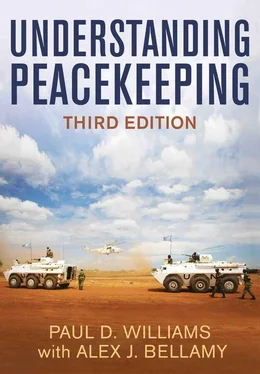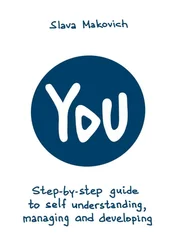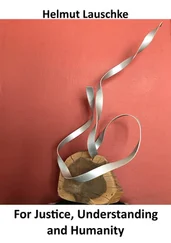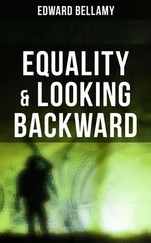Third, although muted by Cold War politics and less salient than the first two ideas, the history of international organization and the evolution of early peace operations after 1945 were both influenced by the growing significance accorded to humanitarian concerns. It is often overlooked that some of the UN’s earliest operations (e.g. ONUC and UNFICYP) were tasked with protecting and promoting human rights (Månsson 2005). As the next two chapters demonstrate, this was to become a central challenge facing peacekeepers during the 1990s and beyond.
4 Peace Operations during the 1990s
Between 1988 and 1993, peace operations underwent a triple transformation. First, there was a quantitative transformation. During this period, the UN conducted twenty-two peace operations – more than it had undertaken in its previous forty years combined. The number of non-UN peace operations also rose significantly, although not to the same degree (with twelve missions launched during this period compared with twenty-seven between 1947 and 1987). There was also one UN-authorized mission: the US-led Unified Task Force deployed to Somalia in 1992. As a result, the number of countries providing peacekeepers also increased, including great powers such as the US, France and the UK (Findlay 1996). Second, there was a normative transformation reflected in the move to promoting a post-Westphalian conception of stable peace. Finally, as a result of the normative transformation, there was a qualitative transformation of UN operations, which were asked to carry out complex missions reminiscent of ONUC in the 1960s but on a far more regular basis. In places such as Cambodia, Bosnia and Somalia, the UN launched operations that were qualitatively different from earlier missions, marrying peacekeeping with the delivery of humanitarian aid, state-building programmes, local peacemaking and elements of peace enforcement. With the important exception of ONUC, these missions were also much larger and more expensive than anything the UN had attempted before. In contrast, most non-UN peace operations during this period remained focused on more traditional tasks.
By 1995, however, the catastrophes in Angola, Somalia, Bosnia and Rwanda prompted many states to re-evaluate the value of UN peace operations and the nature of their contribution to them. Some senior UN officials also asked whether the organization should go ‘back to basics’ and conduct operations only with the consent of the host parties (Tharoor 1995). The number of UN peacekeepers then fell dramatically, and regional organizations and coalitions became more popular. This ushered in a period of introspection at the UN, during which the organization produced important reports detailing its failings in Rwanda and Bosnia and a comprehensive review conducted by the so-called Brahimi panel (UN 2000). These reports identified serious problems with the way in which the UN mandated, organized and conducted its peace operations and exposed gaps between the tasks peacekeepers were expected to fulfil and the conceptual and material resources made available to them.
The end of the twentieth century was therefore a seminal time for peace operations, which this chapter explores in four parts. The first two sections examine the causes and the nature of the triple transformation of peace operations, while the third focuses briefly on some of the high-profile missions, charts the failure of operations in Somalia, Angola, Bosnia and Rwanda, and describes the subsequent retreat from UN peace operations. The final section examines what lessons were learned from these failures, especially the 1994 Rwandan genocide and the 1995 massacre in the Bosnian ‘safe area’ of Srebrenica.
4.1 The transformation of peace operations
A mix of factors account for the triple transformation of peace operations after 1988 (see table 4.1). On the demand side, all bar one of the UN missions created between 1988 and 1993 (UNIIMOG) were ‘brokered requests for UN assistance’ (Durch 1993: 17). In other words, they were formally requested by peace agreements or ceasefires brokered by third parties and endorsed by the conflict parties. In most cases, the UN played the role of broker, but there were a number of exceptions: UNTAG was the product of a US-led mediation effort through a Contact Group of Western governments and UNAVEM II the product of an initiative spearheaded by Portugal, the Soviet Union and the US (Durch 1993: 17, 20–2). The majority of peace processes addressed conflicts that preceded 1988, and all of those had some connection to Cold War politics. In other words, this period witnessed the conclusion of many civil wars that had been provoked and sustained by the Cold War’s ideological struggle. As the superpowers withdrew their patronage, so it became harder for local clients to maintain their war effort. This created powerful incentives for belligerents to search for a negotiated settlement, and peace operations were an important part of supporting that process. The early success of the smaller operations launched in 1988 and 1989 reinforced that idea.
On the supply side, each country had its own reasons for providing peacekeepers, but at least three general factors played a role. First, the disintegration of the Soviet Union created a much more proactive Security Council. Between 1990 and 2002, only twelve draft resolutions were vetoed – by far the lowest rate of vetoes since the UN was established. The US cast nine of these, six in response to draft resolutions critical of Israel. In comparison, between 1945 and 1990, 238 vetoes were cast. Cooperation between East and West played a major role in resolving the Central American wars and conflicts in Afghanistan, Namibia, Angola and Mozambique. Moreover, from the late 1980s, China began to adopt a more positive stance on peace operations, increasingly accepting that the UN Security Council had a legitimate role to play in the resolution of conflict and the amelioration of human suffering (Fravel 1996).
Table 4.1Explaining the triple transformation
| Demand |
Supply |
| 1 End to civil wars brokered by third parties |
1 More cooperative Security Council |
| 2 Request for peace operations to monitor and implement peace accords and ceasefires |
2 Globalization of media, democratization, and human rights creates government interest |
| 3 Recognition that peace operations can play an effective role (after 1988–9) |
3 Peace dividend: end of Cold War free military capacity |
Second, the wave of democratization, the spread of human rights and the so-called CNN effect led more governments to see peace operations as ‘politically desirable’ (Jakobsen 2002: 274). As the former UN Secretary-General Pérez de Cuéllar suggested in 1991, ‘we are clearly witnessing what is probably an irresistible shift in public attitudes towards the belief that the defense of the oppressed in the name of morality should prevail over frontiers and legal documents’ (in Scheffer 1992: 4). These three trends brought together a new and wide coalition of states willing to provide peacekeepers, including the great (Western) powers, internationalist-minded middle powers, and a range of other states, in articulating a new role for peace operations and the UN.
Finally, with the end of the Cold War and no major new strategic challenges on the horizon, governments had more military capacity to commit to peace operations. Moreover, some militaries declared an interest in taking on such roles in order to justify their budgets and guard against excessive cuts as part of the post-Cold War ‘peace dividend’ (Freedman 1998: 34–5; Jakobsen 2002: 273).
Читать дальше












